Fashion
Airline Shirt
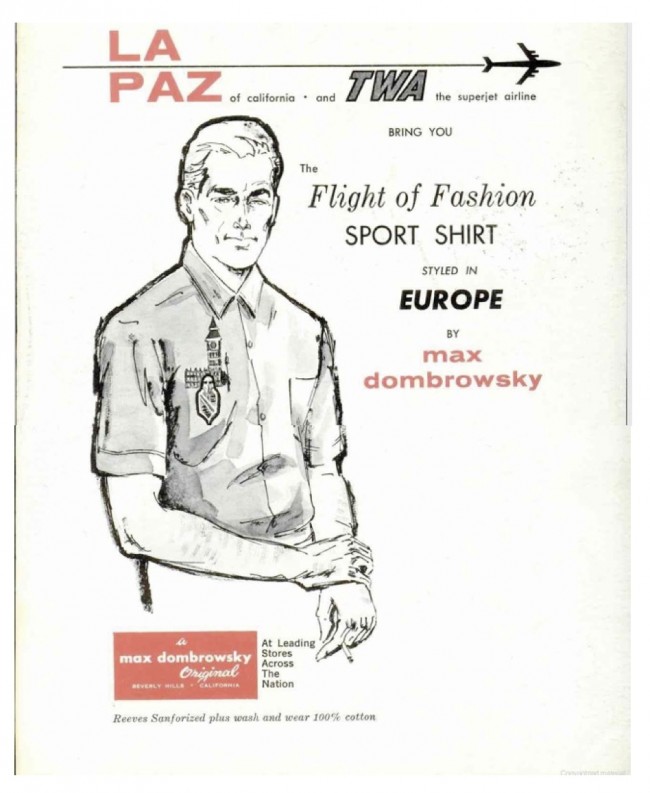
[Click to enlarge]
Yes, all my clothes are styled by airline companies.
Original ad here.
Posted By: Paul - Tue Mar 08, 2016 -
Comments (9)
Category: Fashion, Air Travel and Airlines, 1960s
Swinging Britain
Posted By: Paul - Sun Mar 06, 2016 -
Comments (13)
Category: Fashion, Avant Garde, Teenagers, Bohemians, Beatniks, Hippies and Slackers, Psychedelic, 1960s
Corn Swimsuit
June 1955: The U.S. Agricultural Research Service put on a fashion show for members of President Eisenhower's Agricultural Advisory Commission in which they showed off the "newest refinement" developed by their scientists — a swimsuit made out of corn. They boasted that the suit was mildew resistant, moth-proof, and "won't dissolve in water." They recruited Betty Richter, a "corn-fed girl from Maryland," to model the swimsuit for the members of the Advisory Commission.The Research Service scientists had, in addition, created an "apron made of hog lard," which Richter also modeled, but I can't find any pictures of the hog-lard apron.
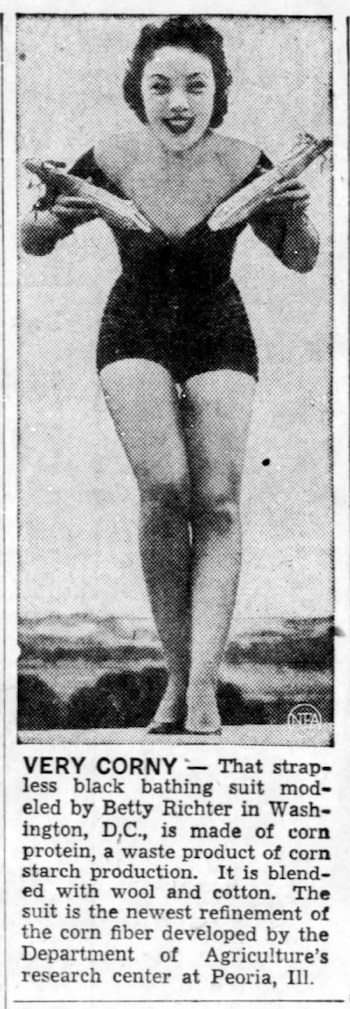
Santa Cruz Sentinel - June 30, 1955
Posted By: Alex - Tue Mar 01, 2016 -
Comments (8)
Category: Fashion, 1950s
Moldy Fashion
May 1999: Belgian fashion designer Maison Martin Margiela had a fashion/art exhibition at the Brooklyn Anchorage gallery in New York City in which he displayed his latest creation — mold-covered clothes. Reported Time: "The clothes were dipped in agar and treated with mold, bacteria and yeast; they were then left to develop new colors and textures (the smell is a bonus)."In fairness to Martin Margiela, this was more art than fashion show. According to art historian Ingrid Loschek, the display "compared the natural cycle of creation and decay to the consumer cycle of buying and discarding."
The moldy clothes were burned at the end of the exhibition, since they were in such an advanced stage of decomposition that they were unfit for anyone to wear.
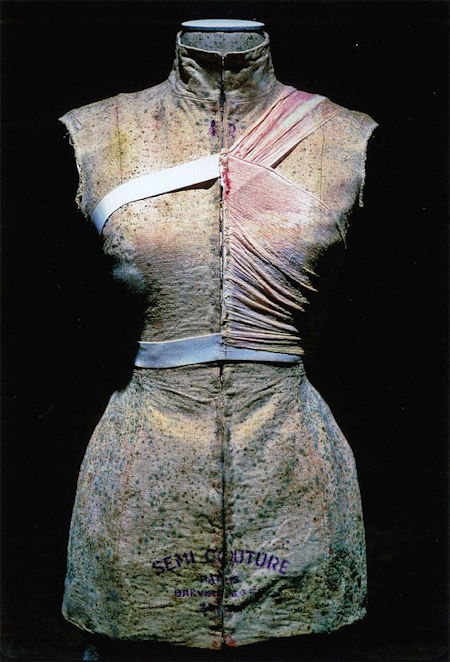
via pinterest
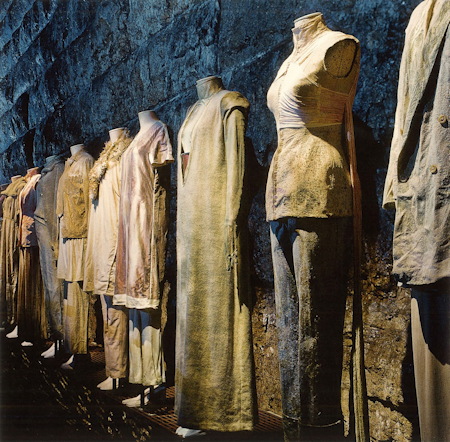
via Slow and Steady Wins the Race
Posted By: Alex - Wed Jan 27, 2016 -
Comments (9)
Category: Art, Fashion, 1990s
The Bandleader Shirt
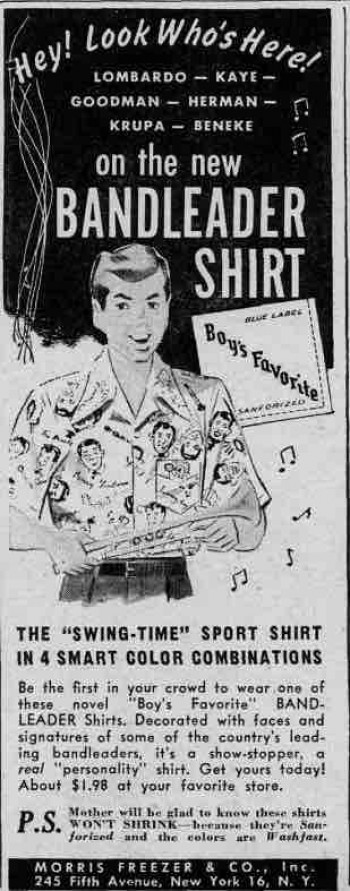
All your contemporary T-shirts with images of rappers put together will never be as cool as this.
Original ad here.
Larger image here.
Posted By: Paul - Sun Jan 24, 2016 -
Comments (4)
Category: Fashion, Music, 1940s
Follies of the Madmen #271
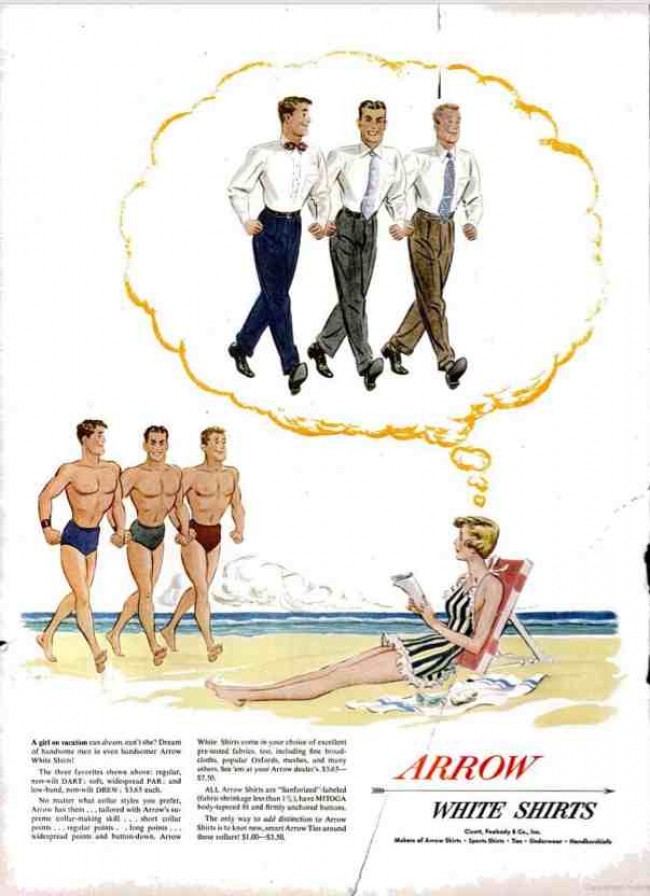
Female sexuality illustrated.
Original ad here.
Posted By: Paul - Mon Jan 11, 2016 -
Comments (5)
Category: Body, Fashion, Sexuality, Advertising, 1950s, Women
Amish Marathon Runner

Posted By: Alex - Mon Nov 23, 2015 -
Comments (11)
Category: Fashion, Religion, Sports
Atomic Armor for Children, 1951
Designed by Lee Pauwels of Los Angeles to protect his six-year-old son from harmful atomic rays given off by a nuclear explosion. He noted that the suit wouldn't protect his son from the concussion of the blast, "But authorities believe a person could survive the blast at much closer range if he were lying down and wearing the suit. Afterward he'd be able to leave the area that had become contaminated by harmful rays."I wonder if this suit still survives somewhere, stored in someone's attic. Well, it must be around if even atomic rays couldn't harm it. This is the kind of thing that should be on display in the Smithsonian (if I were running it).
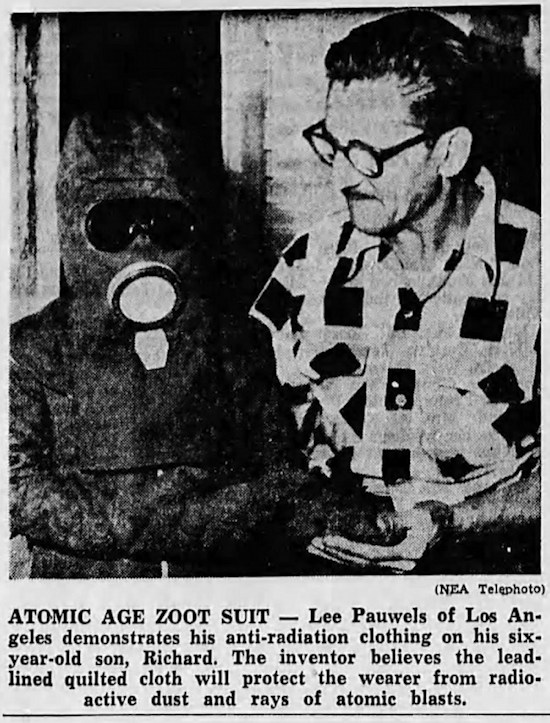
The Eugene Guard - Jan 1, 1952
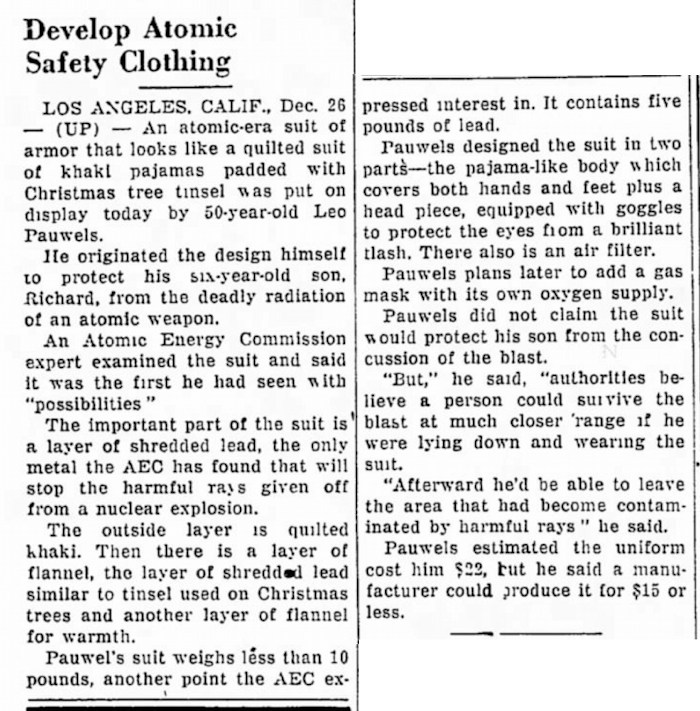
Traverse City Record-Eagle - Dec 26, 1951
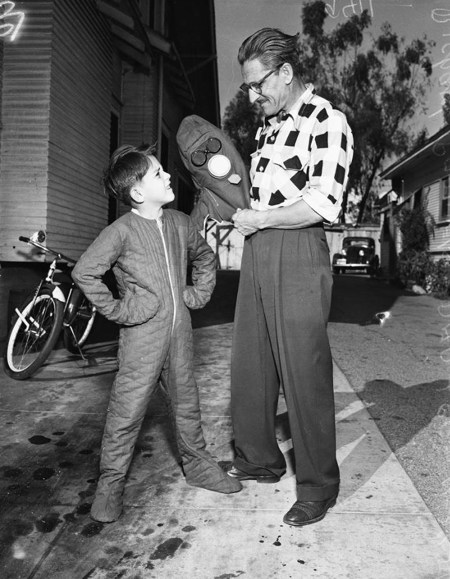
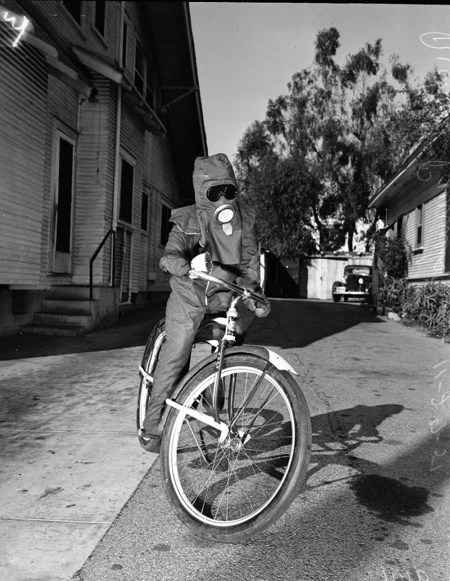
Posted By: Alex - Sat Nov 21, 2015 -
Comments (7)
Category: Armageddon and Apocalypses, Fashion, Atomic Power and Other Nuclear Matters, 1950s
Follies of the Madmen #265
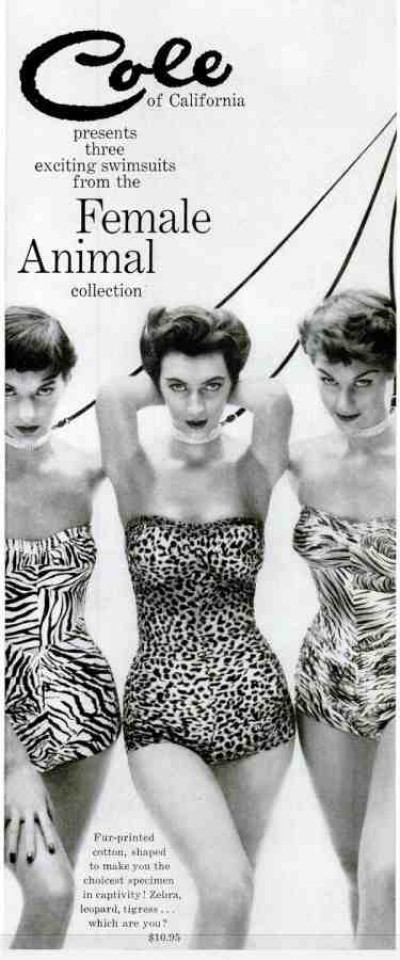
Hey, wait, most beaches don't allow pets!
Original ad here.
Posted By: Paul - Tue Nov 17, 2015 -
Comments (0)
Category: Animals, Fashion, 1950s, Women
Beatnik Wedding
Posted By: Paul - Sun Oct 25, 2015 -
Comments (6)
Category: Fashion, Husbands, Wives, Bohemians, Beatniks, Hippies and Slackers, 1960s

| Who We Are |
|---|
| Alex Boese Alex is the creator and curator of the Museum of Hoaxes. He's also the author of various weird, non-fiction, science-themed books such as Elephants on Acid and Psychedelic Apes. Paul Di Filippo Paul has been paid to put weird ideas into fictional form for over thirty years, in his career as a noted science fiction writer. He has recently begun blogging on many curious topics with three fellow writers at The Inferior 4+1. Contact Us |




